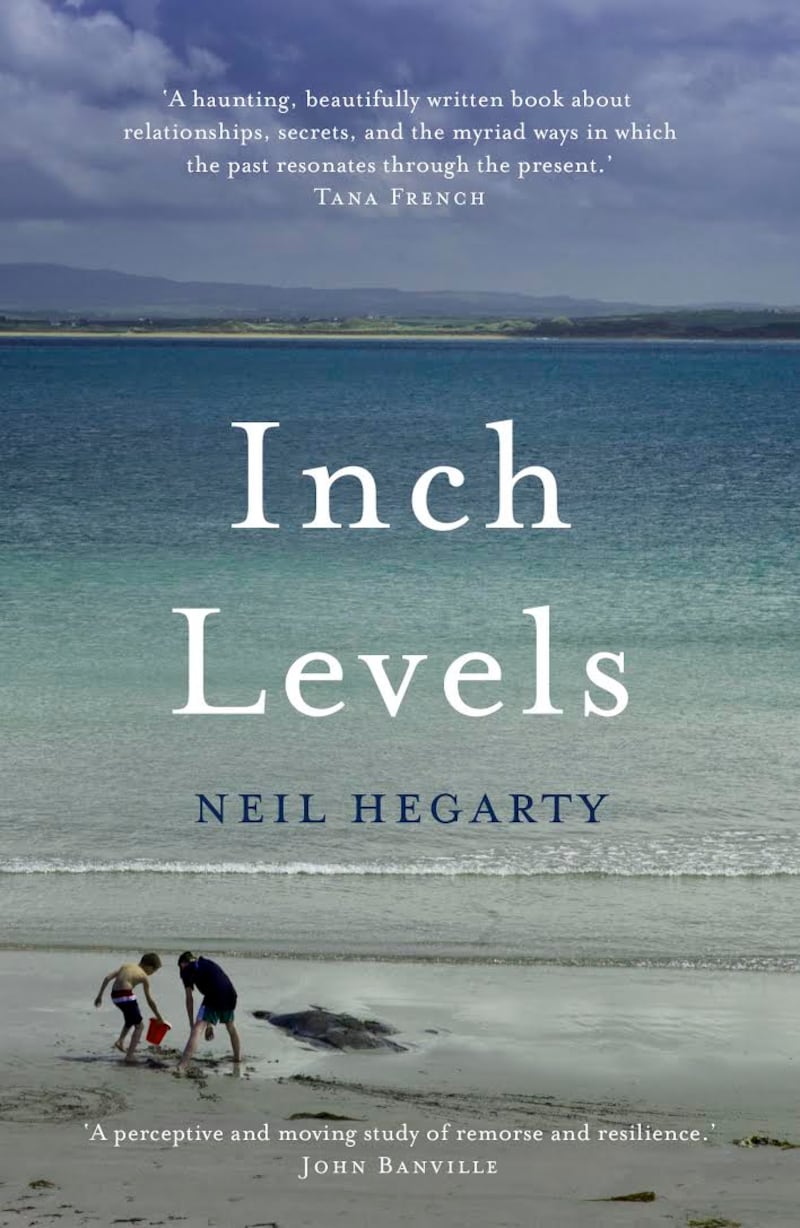I came across the term “palimpsest” for the first time in Sisters of Sinai, Janet Soskice’s account of two Scottish sisters’ mission to copy an early edition of the Gospels, discovered in the monastic library at St Catherine’s of Sinai in the late 19th century. The manuscript they found was a palimpsest. When vellum had become scarce, the monks had scraped away the writing from the pages and written something new on top. But with the passage of time, the air revived the old ink and the old words re-emerged.
As a mystery writer, the idea of a palimpsest – on which later writing has been superimposed but traces of the original remain – fascinated me: an attempt to efface, to block out, to erase, which doesn’t entirely succeed.
In his elegant novel Inch Levels, Neil Hegarty references palimpsest only once "…another map – a palimpsest, he thought later – laid over that map; a palimpsest with marks in deep indelible ink", but the notion of a hidden script underpins the entire book.
I've heard it said that it should be impossible to set a murder mystery in rural Ireland because everyone would know within five minutes who had done it

The book offers a haunting portrayal of Inishowen and Derry, a stunningly beautiful part of the country I know well, where I lived and worked for many years, and where I have chosen to set my own series of crime novels: and Hegarty’s landscape is rich and recognisable: “She stood still on top of the sea wall and looked across the waters of the lough, grey and silver, the purple height of the island on the further shore, higher blue hills to east and west; and a mass of wintering geese in the fields, of wintering swans on the water.”
But Inch Levels itself, reclaimed land where “Lough Swilly stretches sinuously north and south,” where a wall was constructed, laboriously, “stone upon stone, until the sea was safely held back and they could relax a little”, and “the pumping station hummed ceaselessly, maintaining the delicate balance between land and sea, drawing away the water that would otherwise seep in and drown the place” is more than just a setting for Hegarty’s novel. It is a metaphor for survival. In a place where families must live together for generations, there are times when a new script must be composed and laid over the old so that the delicate balance between past and present can be maintained; and times when it is as important to be able to forget as to remember.
In Inch Levels, Patrick Jackson is dying. Alone in his hospital room in Derry, his mind is “humming along… sorting, arranging, wrapping up, discarding, making sense of a life”. He is “setting the scene: stretching a canvas”. Painting in the details, “blank to begin with” then later “characters being outlined… Using one of those black pencils that roughens, thickens their edges.”

Until this point, Patrick has done what has been asked of him. He is a pond-skater; he has “observed and regarded and absorbed” but “never punctured the surface of the water”. It is no surprise that he has responded in this way. All his life, he has been warned by his mother Sarah not to get involved, to mind his own business, to “walk straight past”. Sarah herself has been lying by omission all her life. “No, the truth would hardly do at all.” Passing through the area where she grew up, “her grandparents – her father’s parents – had farmed those same boggy fields,” her father’s voice returns to her, “don’t be telling her too much”, “don’t be letting on”. By the time she is an adult, Sarah’s shell is like a brazil nut. When she tries, just the once, to open up to her daughter, Patrick’s sister, she fails. It was “easier to say nothing, to keep her silence, her distance. Keep her past stamped into a shadowy corner. Better for all their futures.”
For Patrick and his sister Margaret growing up, “the lid was on, though it rattled from time to time ominously… all was well,” although gradually it dawns on them that “the myths which helped to structure all of their lives... had little bearing on reality.”
I’ve heard it said that it should be impossible to set a murder mystery in rural Ireland because everyone would know within five minutes who had done it. This should be true if it weren’t for the fact that rural people don’t just keep their own secrets, they keep other people’s too. “Tracks covered and dust kicked; no trace left at all”. Loyalty, whether misplaced or otherwise, can last for generations.
Patrick has been required to keep a secret about the murder of a child. He has “erased a story”, “wiped the slate clean”. But Inch Levels, like reclaimed parchment, bears traces of its alteration and Patrick too has been altered by what he has experienced, by what he knows. Whilst he hoped he could remain in a “sort of continuing present tense”, he has discovered that the price of keeping his secret “is a deformation of the soul”. “Eventually, the secret will create a hollow which the soul had once inhabited.”
And just because something is unsaid, and a new script superimposed, does not mean the earlier reality is forgotten. People remember things when they are close to the land. At Kinnagoe Bay, where Patrick and Margaret are taken as children, there is a shipwreck – a Spanish Armada ship, wrecked on the reefs off the beach. When Patrick asks his father where the wreck is, his father shrugs. “Never found son. Not yet – but the local people know it’s there.”
Inch Levels itself is a palimpsest – the true, unacknowledged story and the crime which is at the heart of the novel are revealed as the pages turn: because secrets last only as long as people choose to keep them, "as long as nobody poked and dug". For the inks "soak through the pure fabric of the map; they stain and mark; and all the while the edges of the map grow grubby and soiled with handling, with use, with life".
Andrea Carter is the author of Death at Whitewater Church and Treacherous Strand. Her third novel The Well of Ice will be published in October












